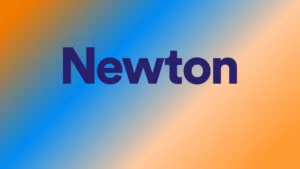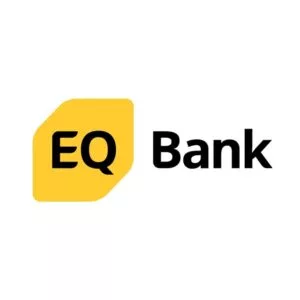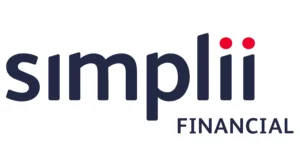
The Best Online Banks in Canada
In recent years, online banks have grown in popularity, so much so that they are beginning to replace traditional brick and mortar banks. Everyday, more and more people are deciding to leave their original banks and sign up for an online bank account. Still, online banking is a relatively new concept, and there are many institutions to choose from. If you are looking to begin your online banking journey, then this guide is for you. We will list the top online banks in Canada and discuss the pros and cons of each. We will also answer commonly questions about online banks. But first, we will look at what online banks are.
What are online banks?
Online banks operate like any traditional bank except they are completely digital. Customers access their accounts through the bank’s website or mobile app. Most online banks do not have branches, but some banks do have some physical locations in a select number of cities. In terms of customer service, online banks have call centre or a chatbot. You can usually use these services 24/7, although the call centre may have limited hours during weekends or holidays.
Most digital banks have the same services of traditional banks, like chequing and savings accounts, mortgage applications, and debit or credit cards. However, online banks differ in which services they offer. For example, one online bank may not offer a chequing account, while another one does.
Our picks
What to look for in an online bank
When you start looking at different online banks, here are some things you should consider.
Fees: Traditional banks often charge monthly fees for transactions and other services. Most online banks do not charge monthly fees. However, some organizations do have fees for things like overdrafts. We recommend you stick with online banks that either have zero fees or charge a low percentage.
Minimums: There are two types of minimums in banking. The first is a minimum deposit. This is a set amount of money required to open an account with a bank. Generally, the amount ranges between $25-$100. The second type is a minimum balance. This is the minimum amount of money a bank will require to have in your account. If you fail to maintain the minimum balance, you could be charged a monthly maintenance fee.
Online banks do not have minimum balances. However, some will have minimum deposits for their accounts. Try to find an online bank with the best offer for minimum deposits.
Security: Online banks have several security measures to protect your money. One example is multi-factor verification. This feature requires you to provide two pieces of before you can access your account. For example, you will have you enter your password and then a pin number sent to your phone before you can access your account. Additionally, federally incorporated banks are covered by the Canadian Deposit Insurance Corporation (CDIC). Deposits in CDIC banks are protected up to $100,000 in the event of hacks/thefts.
ATMs: Some banks have their own ATMs where you can deposit or withdraw cash. If this important to you, go with a bank that has its ATMs in your area.
APYs: APY stands for annual percentage yield. They measure how much money you could make from your deposits. APYs are important for savings accounts or accounts like TFSAs or GICs. Online banks offer different APYs, so it is best to compare them to see which bank has the best offer.
Convivence/ease of use: Online banking should be a seamless process. Therefore, the bank’s website and app should operate smoothly and be simple to use. An online bank with a poorly run and frustrating website or mobile app is not a good option.
Customer service: Many online banks prioritize customer service because they do not have a physical branch where customers can go to ask questions. Instead, customers can speak to agents by phone or through a virtual chat. Some online banks even offer online video meetings.
Best online banks
Tangerine
Tangerine is one of the biggest and best online banks in Canada. Launched in 1997 as ING direct, Tangerine has grown to have over 2 million users and approximately $40 million in total assets. Tangerine has four different account categories: savings, spending, investing, and borrowing. Each category has several accounts. In the savings category, you can take advantage of the high interest rates, which range from 0.10% up to 2.60%. There is also a section for business savings accounts. These accounts are designed to aid business growth through high interest rates and no fees or service charges. Because of this section, Tangerine is a good online bank for small businesses.
The chequing account in the spending category has zero fees and free e-Transfers®. You can also apply for a credit card, which has money-back rewards for everyday purchases. The investment category lets you set up accounts like a Retirement Savings Plan (RSP) or Retirement Income Fund (RIF). In the borrowing category, you can apply for a mortgage, home equity line of credit, or a line of credit. The interest rates for each are low.
There are multiple ways to bank with Tangerine. To withdraw or deposit cash, you can use one of 3,500 Scotiabank ATMs located across Canada. To access your account, you can use the Tangerine website or mobile app, which is highly rated with consumers. A unique feature of Tangerine is its Money Management Tools. These are tips and tools on how to save money and make the most out of your investments. For example, the Left to Spend tool tracks your spending and shows you how much money you have left to spend each month.
If you have any banking questions, you can call to speak with a Tangerine representative. For everyday banking needs, you can call Tangerine 24/7. For mortgage questions, the hours are Monday to Friday from 10:00 am to 8:00 pm Eastern Time (ET), closed for holidays. For investment concerns the hours are Monday to Friday from 8:00 am to 8:00 pm ET, closed for holidays. If you need a quick answer, you can use the Tangerine Chatbot to ask your question. There is also an FAQ section and a tax support page. And if you need more financial advice, Tangerine has physical locations, called “cafes”, in Toronto, Montreal, Calgary, and Vancouver where you can meet with a Tangerine representative.
Pros
- Offers all the banking services found with traditional banks.
- Has accounts designed to help small businesses grow.
- Good customer services.
- Access to ATMs.
- Highly rated mobile app.
Cons
- ATMs may be hard to find in some locations.
- Wait times for phone calls may take longer than expected.
- Tangerine cafes are in only four cities, which limits access to people in those cities.
EQ Bank
EQ bank is an entirely digital bank focused on providing Canadians with the best accounts to save their money. To achieve this goal, their savings accounts charge zero fees and have an interest rate of 1.25%. Because of this high interest rate, EQ Bank is popular with investors and money savvy bankers. You can also use the savings accounts to pay bills and send money through digital transfers.
Outside of their savings accounts, EQ Bank lets customers apply for a mortgage or make international money transfers. There is no minimum balance required to set up an account with EQ bank. However, there is a maximum balance limit of $200,000. Unlike Tangerine, EQ bank does not have any ATMs. This is a drawback for those who want to physically deposit or withdraw cash from their accounts.
For common banking questions, the EQ Bank Chatbot is available 24/7. If you want to speak to a customer service representative, you can call EQ Bank from 8:00 am to midnight ET any day of the week.
On the reddit page r/PersonalFinanceCanada, users said that EQ Bank was a great option because of their high interest rates. People also said the EQ Bank website was easy to use and that customer service was responsive and helpful. However, some people said that customer service lacks when it comes to technical issues. In these instances, the response time can take a while and communication is poor.
Pros
- High interest rates.
- Savings accounts act as a hybrid chequing account.
- Easy to use web interface.
Cons
- No ATMs.
- Customer service can take longer for technical issues.
Simplii Financial
Originally called PC Financial, Simplii Financial was founded by CIBC in 2017. The bank offers four main accounts:
- No fee chequing account: This account has benefits such as no monthly fees, free daily banking, no minimum balance, free e-Transfers®, and access to over 3,400 CIBC ATMs located across Canada.
- High interest savings account: Also known as HISA, this savings account has zero fees and no minimum balance requirement. Simplii’s HISA has a good interest rate, and new clients can earn a special 2.20% interest rate when they open an account (the offer ends April 30, 2022).
- USD savings account: This account is an easy way to transfer funds between your Simplii Financial CAD and USD accounts. Additionally, this account lets you request bank drafts and money orders, and you can send money to over 120 countries with no transfer fees.
- Student banking offer: This is an account designed for university students. With the student bank offer, you get a no fee chequing account and Simplii Financial cash back visa card. An additional perk is the refer a friend offer. If you get one of your friends to sign up with Simplii, you earn $50. Plus, even after you graduate, you are not charged monthly fees.
Outside of those four accounts, Simplii offers common banking services and accounts like TFSAs and GICs, mortgage options, and lines of credit. In terms of customer support, the Simplii call centre is open 24 hours a day. You can also chat with an agent online Monday to Friday from7:00 am – 12:00 am ET, or on Saturday, Sunday, and holidays from 9:00 am – 6:00 pm ET. While most agree that the Simplii online experience is good, many find lackluster when compared to Tangerine. A common complaint is that it is difficult to link an external bank account to a Simplii account. Other customers said that withdrawing large amounts of money (around $2,000) from Simplii was a painful process.
Pros
- Offers all the services provided by CIBC without the fees.
- App and website are simple and easy to use.
- Good deals and offers for new clients.
Cons
- Limited number of account compared to banks like Tangerine.
- Difficult to link an external account to a Simplii account.
- Withdrawing large amounts of money can take a long time.
Wealthsimple Cash
Unlike the other entries on this list, Wealthsimple is not an actual bank. The company is known as an online investment management service. Their most popular products include the investing account and the commission free stock trading service. However, Wealthsimple has started to branch out into other services. In 2020, they entered the online banking world with Wealthsimple Cash.
Wealthsimple Cash acts as 2-in-1 chequing and savings account. Initially, the account came with a high interest rate of 2.4%. Unfortunately, due to market conditions, the interest rate fell to 0.5%. And as of July 12, 2021, Wealthsimple Cash accounts no longer earned 0.5% interest.
Despite this setback, Wealthsimple Cash still has its benefits. First, its is an easy way to transfer and receive money from others. Wealthsimple Cash uses peer to peer transfers, which is a very quick process; the transfer can happen in seconds. Plus, there are zero fees for transactions, even for foreign exchanges. Once you have a Wealthsimple Cash account, you can sign up for a Wealthsimple Cash Card. With the card, you can start earning 1% cash back on everyday purchases. The card is currently unavailable, and its release is in the works
Wealthsimple Cash is also planning additional features that should be implemented in the near future. One notable feature is the ATM fee reimbursement. ATMs can charge you fees, typically a surcharge, when you withdraw money form them. For example, you could be charged $5 for withdrawing $30. The ATM fee reimbursement feature will pay back any fees charged to your account by an ATM, up to a limited number of reimbursements.
While Wealthsimple Cash is a seamless way to send and receive money to others, the account lacks the features of other online banks. Plus, features promised for its launch have either been discontinued or delayed. For these reasons, Wealthsimple Cash should be used as an accessory service to your central banking.
Pros
- No fees for everyday transactions.
- Has an efficient peer to peer transfer system.
Cons
- Does not have the services provided by online banks.
- Features promised on the launch day have either been delayed or discontinued
Before we dive into Altern Bank, we should explain what credit unions are. Credit unions are similar to commercial banks in that they provide financial services to a customer base. However, credit unions are run by a group of people who share common financial goals. Their main goal is not to make a profit. Rather, credit unions see themselves as more community orientated; they place people first over making a profit. Because of their community first approach, most credit unions serve only serve certain provinces. Initially, membership in a credit union was restricted to people living in the same community or those working in the same industry or company as the other members. In recent year, credit unions have opened their membership to the general public.
Alterna Bank is a division of Alterna Savings and Credit Union LTD, a credit union based in Ontario. This bank is entirely digital, but they do have branches in Ontario and Quebec. Alterna offers four accounts for everyday banking:
The no-fee eChequing account charges zero monthly or transaction fees plus there is no minimum balance needed for the account. You also have access to over 3,300 ATMs in The Exchange® Network (Canada’s largest ATM network) surcharge free. The high interest eSavings account has an interest rate of 0.90%, which is a decent rate for an online bank. Both the TFSA eSavings account RRSP eSavings account have a 0.90% interest rate. Both accounts make it easy to transfer your funds.
Alterna Bank also provides other services. The bank offers two mortgage rates: a 3 year fixed closed mortgage at 3.44% and a 5 year fixed closed mortgage at 3.49%. The investing service lets you make the most out of your investments. For example, you can use the Direct Investing service to connect with Qtrade Investor, a highly rated online brokerage.
Lastly, Alterna Bank has accounts designed for small businesses. The Small Business eChequing account has no monthly fees. However, this only applies if your minimum daily closing balance is $3,000 throughout the month. If the amount is not maintained, you will be charged a $5 monthly fee. But there still are perks to this account. You get free unlimited electronic debit and credit transactions. Plus, incoming e-Transfers® are unlimited. For outgoing transfers, you get 6 free per month. You can also apply for loans and lines of credit and set up a payment system for your business. Alterna Bank is also the first and leading financial institution to support the cannabis industry. The bank has various products and services designed for cannabis producers and retailers.
Pros
- Products and services tailored to small businesses.
- Free access to ATMs across Canada.
Cons
- Limited number of branches in Canada (only in Ontario and Quebec).
- People have said customer service can be lacking at times.
Frequently asked questions about online banks.
Are online banks worth it?
There are many reasons why online banks are worth it:
- Lower or no fees: Many online banks do not charge monthly fees or fees for transactions and e-Transfers®. If an online bank does charge service fees, they are extremely low.
- No minimum balances: Online banks do not have a required minimum balance for your chequing or savings accounts.
- High interest rates: Compared to traditional banks, online banks have higher interest rates for savings. For example, the savings account at EQ Bank has a 1.25% interest rate. A traditional bank like CIBC might have a savings interest rate of 0.05%.
- Convenience: Since online banks are completely digital, you can access your account at any time of the day. When you are on the go, you can sign into your account through your bank’s mobile app.
- Ease of use: Online banks make baying bills, depositing cheques, and transferring money easy and seamless. This is thanks to their intuitive websites and mobile apps.
What are the disadvantages of online banks?
While the have many benefits, online banks do have their disadvantages:
- Limited services: Some online banks do not provide all of the financial services found in traditional banks. For example, some online banks only offer chequing and savings accounts.
- Little to no personal relationship: The lack of branches with online banking means there is little to no personal relationship between you and the institution. Plus, some banking needs are best discussed in-person. If you prefer the face-to-face interaction with agents, then we suggest you stick with traditional banks.
- Limited number of ATMs: Online banks differ in how many ATMs they offer. This may make it hard for you to find your online bank’s ATM in your area.
- Limitations on transaction: While online banks can perform many banking transactions, they fall behind when it comes to complicated transactions like wire transfers or bank drafts. People have said that online banks take a long time to process these transactions. If you frequently perform these types of transactions, then you should stick with a traditional bank.
How safe are online banks?
Online banks are just as safe as regular banks. They have many security measures in place to protect your money. One example is multi-factor authentication. This measure requires you to provide two pieces of evidence before you can sign into your account. Most online banks encrypt their software to prevent hackers from infiltrating the network. Lastly, most online banks are backed by the CIDC (Canadian Deposit Insurance Corporation). The CIDC insures deposits up to $100,000.
How do I open an online banking account?
Overall, there are four steps to opening an account with an online bank.
Step 1: Select an account: Before you select an account, make sure you meet the bank’s requirements for the product. In general, online banks require you to:
- Be a resident of Canada (Quebec is excluded).
- Be the age of majority in your province (either 18 or 19 years old).
- Have a Social Insurance Number (SIN).
Step 2: Enter in your information: Once you have selected your account, you will have to enter in your personal information like name, phone number, date of birth, location/address, and your SIN. After you have submitted the info, the bank will sent you an email with details on what happens next.
Step 3: Verify your identity: If you are a new customer, then you will have to provide a government-issued ID. Most times you can take a picture of your ID with your phone and send it digitally. Other banks require you to verify your identity in person. If you already have an account with the bank, you might be able to skip past this step.
Step 4: Start banking: After you have verified your identity, you will have to wait while the bank process your application. The wait time will differ between banks. Once your application is approved, you can start using your online bank account.
Read more

Joint and Separate Bank Accounts For Young Couples
Having trouble picking between a joint or separate bank account? If so, then this guide is for you.

The Best Ways to Fight Inflation in Canada
Learn how to save money during periods of extreme inflation.

Newton Review: Features, Trading, Pros and Cons
Newton is a Canadian crypto exchange. Check out this article to learn more.

The Best Crypto Wallets in Canada
If you want to start trading crypto, then you’ll need a crypto wallet.




